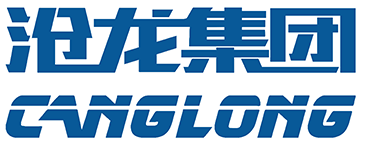Polyurethane foam insulation panel is the right choice for efficient insulation
In recent years, the global average temperature has risen by 1.2℃ compared with pre-industrialization, with extreme high temperatures, glacier melting, and soaring energy prices. The alarm bells of the climate crisis continue to ring. According to data from the United Nations Environment Program, the construction sector contributes 37% of global carbon emissions, of which heat loss from walls, roofs and cold chain equipment accounts for more than 60%.
In this context, efficient insulation has changed from an optional configuration to a survival necessity. Whether it is a zero-carbon community in the extremely cold region of Northern Europe, a cold chain logistics center in the humid and hot environment of Southeast Asia, or a green oil field facility in a Middle Eastern oil country, they are all looking for a lightweight, long-lasting, low-carbon insulation material.
And polyurethane foam insulation panel (PU Foam Board), with the posture of “black technology”, has become the core role of this global energy-saving revolution.
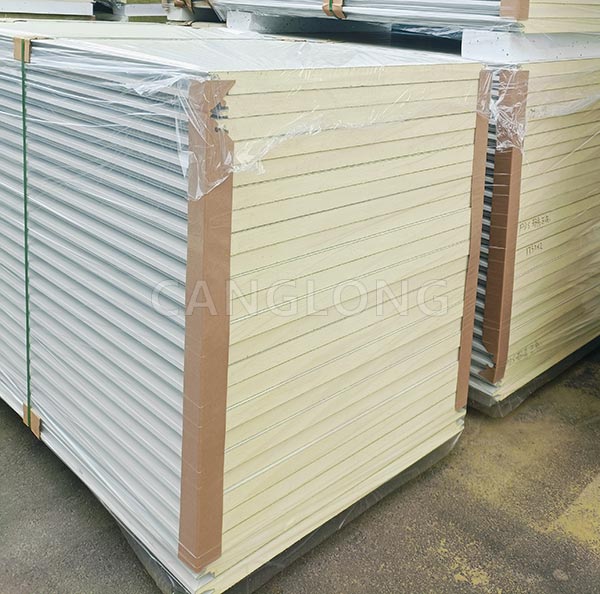
1. Four hard-core highlights of polyurethane foam insulation panel
As the organic insulation material with the lowest thermal conductivity, the thermal conductivity of polyurethane insulation panel is as low as 0.022-0.027 W/(m·K), which is only 60% of the traditional EPS foam board. The performance advantages of polyurethane foam run through the entire life cycle and accurately respond to the four major difficulties of users.
1.1 Stable protection from -50℃ to 120℃
Different from the defects of traditional materials that cause thermal insulation performance to decay due to water absorption, polyurethane foam forms a natural waterproof barrier through closed-cell structure design (closed-cell rate > 92%). Even if it is exposed to humid environments for a long time (such as high-humidity port cold storage and coastal building exterior walls), it can still maintain an initial thermal conductivity of more than 98%. More importantly, its micro-elastic properties can buffer thermal expansion and contraction stresses and avoid secondary heat dissipation problems caused by cracking of traditional insulation layers due to temperature differences. This can be called an “anti-aging artifact” for photovoltaic power stations in the Middle East with a temperature difference of more than 30℃ between day and night and Russian oil and gas storage tanks with an annual temperature difference of 60℃.
1.2 Make the renovation of old buildings less painful
The density of traditional rock wool and glass wool insulation layers is as high as 100-150kg/m³, and additional structural reinforcement is required during construction, and the cost ratio often exceeds the material itself. The density of polyurethane foam is only 30-50kg/m³ (some high flame retardant models slightly increase to 60kg/m³), but it can provide more than 2 times the insulation thickness efficiency. Taking the energy-saving renovation of a 19th-century old building in Berlin, Germany as an example, the use of 30mm thick Canglong polyurethane board instead of 100mm thick rock wool not only saves 30% of the construction period, but also avoids the risk of wall cracking caused by structural weight gain. This feature makes it popular in scenarios such as historical building protection and existing residential renovation.
1.3 From B1 to EN 13501-1 B-s3,d0
Global building fire protection regulations are becoming stricter (such as EU EN 13501-1, US ASTM E84, China GB 8624), and traditional polyurethane was once restricted due to its flammability (oxygen index <20). The nano-composite flame retardant system developed by Canglong Group has increased the product oxygen index to 32 (far exceeding the B1 standard of 26), and the smoke volume during combustion is <700m²/kg (EN 13501-1 standard ≤1000), and there is no molten dripping and no toxic gas release (SGS test, halogen content <50ppm). This breakthrough has enabled it to successfully pass the fire inspection in the high-rise apartment in Gangnam District, Seoul, South Korea, and the expansion project of Jeddah International Airport in Saudi Arabia, becoming the preferred material for scenes with high fire protection requirements.
1.4 Full-cycle environmental protection from production to recycling
Under the dual pressure of the global “carbon tariff” (CBAM) and the “plastic ban”, the carbon footprint of materials has become a core indicator of international procurement. Canglong polyurethane foam uses cyclopentane foaming technology to replace traditional freon (GWP value 1000+), reducing production energy consumption by 40%. Waste boards can be remade into insulation particles through physical crushing (recycling rate > 90%), or incinerated with biomass fuel (carbon emissions are only 1/5 of landfill). Certified by TÜV Rheinland, its full life cycle carbon emissions are 35% lower than traditional EPS, perfectly matching the EU’s “Fit for 55” climate goals and corporate ESG requirements.
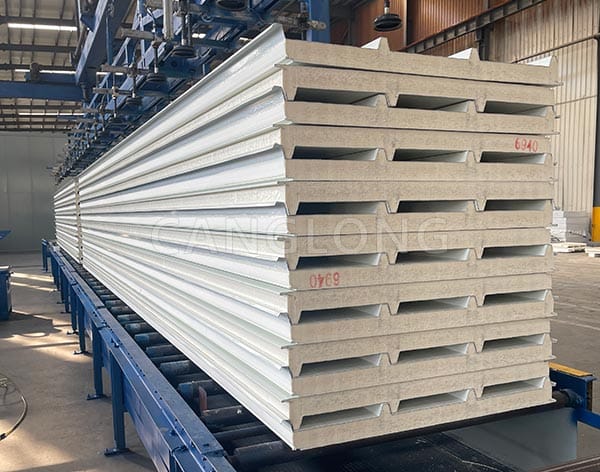
2. Application of polyurethane foam insulation panel
With the above advantages, polyurethane foam insulation panel has penetrated into 30+ industries in 200+ countries around the world, becoming the optimal solution for energy saving, safety and economy.
- Construction field: The European Passive House standard requires that the heat transfer coefficient of the exterior wall is ≤0.15W/(㎡·K), and polyurethane board is its core material (such as the Bo01 community in Malmö, Sweden). Commercial complexes in tropical Southeast Asia (such as Siam World in Bangkok, Thailand) reduce air conditioning energy consumption by 40% through polyurethane boards and ventilation cavity design.
- Cold chain logistics: Food-grade polyurethane boards certified by the US FDA (temperature resistance -40℃~120℃) are used in Amazon’s fresh cold chain vehicles and seafood cold storage in Dubai Port, UAE, to ensure that the 24-hour temperature fluctuation is less than ±2℃ under a -20℃ environment.
- Industrial facilities: Russia’s Yamal LNG project (within the Arctic Circle) uses 150mm thick Canglong polyurethane boards to wrap liquefied natural gas storage tanks, reducing surface heat loss from 1200W/㎡ to 200W/㎡, saving more than US$2 million in natural gas costs annually. China’s Guizhou Data Center uses it as a heat insulation layer for server cabinets, reducing PUE (power utilization efficiency) from 1.5 to 1.3.
- New energy infrastructure: The Berlin Energy Transition Community in Germany uses polyurethane foam insulation panel at the bottom of photovoltaic brackets to solve the problem of reduced power generation efficiency caused by bracket icing in winter. Australia’s desert photovoltaic power station uses a composite design of polyurethane boards and phase change materials to extend the life of components by 5-8 years.
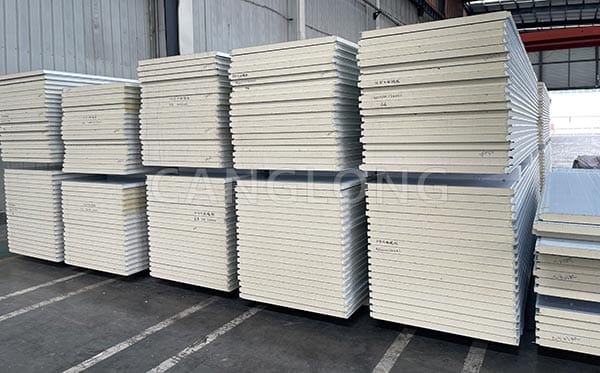
3. Canglong Group’s advantages in the field of insulation panels
When market demand surges, the real competitiveness of an enterprise lies in whether it can continue to provide solutions that exceed expectations. As a Chinese company that has been deeply engaged in polyurethane insulation materials for 20 years, Canglong Group has 10 production lines with an annual production capacity of 3 million square meters. Customized products such as extreme cold type (-50℃ without brittle cracking), high flame retardant type (EN 13501-1 B-s3,d0), and antibacterial type (anti-E. coli>99.99%) launched for different scenarios cover more than 90% of the market demand.
Canglong is not only a material supplier, but also an energy-saving solution service provider. Its technical team can provide one-stop services for architectural design, board selection, and construction guidance.
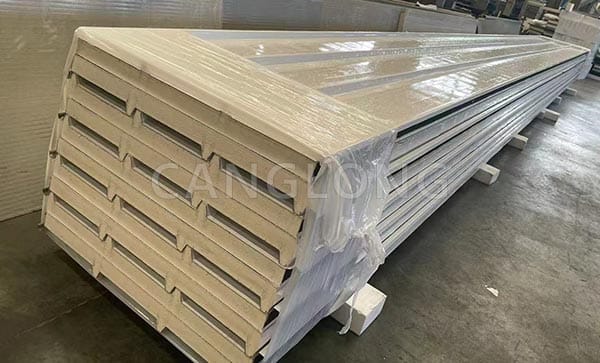
4. Conclusion
Polyurethane foam insulation panel is no longer an optional material, but a key puzzle piece in the global response to the climate crisis. With the triple advantages of technological innovation, global production capacity and full-chain services, Canglong Group is providing the world with more efficient, safer and more sustainable insulation solutions with the attitude of “China Smart Manufacturing”. This is not only the growth of a company, but also a solid step for mankind towards a “zero-carbon future”.
